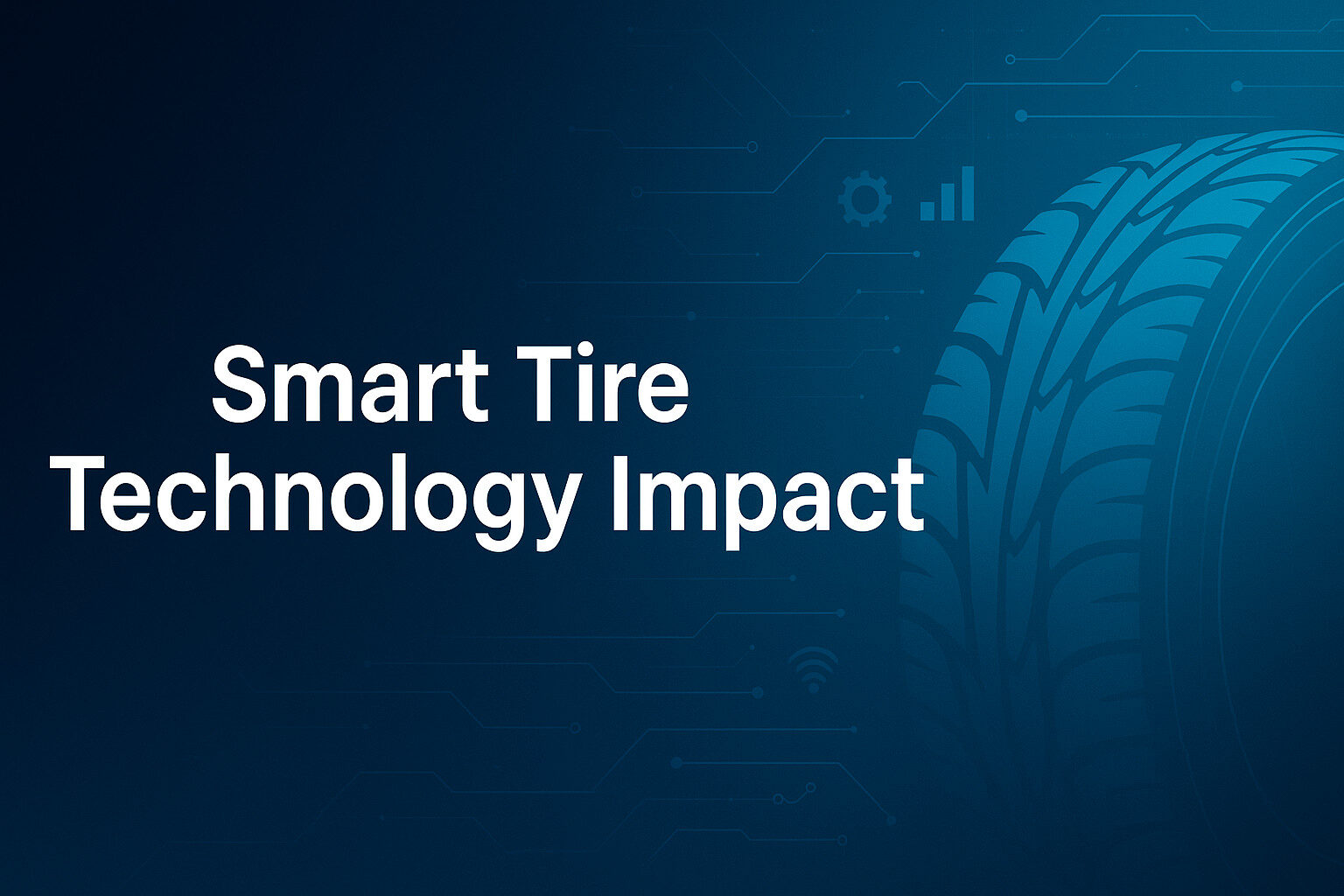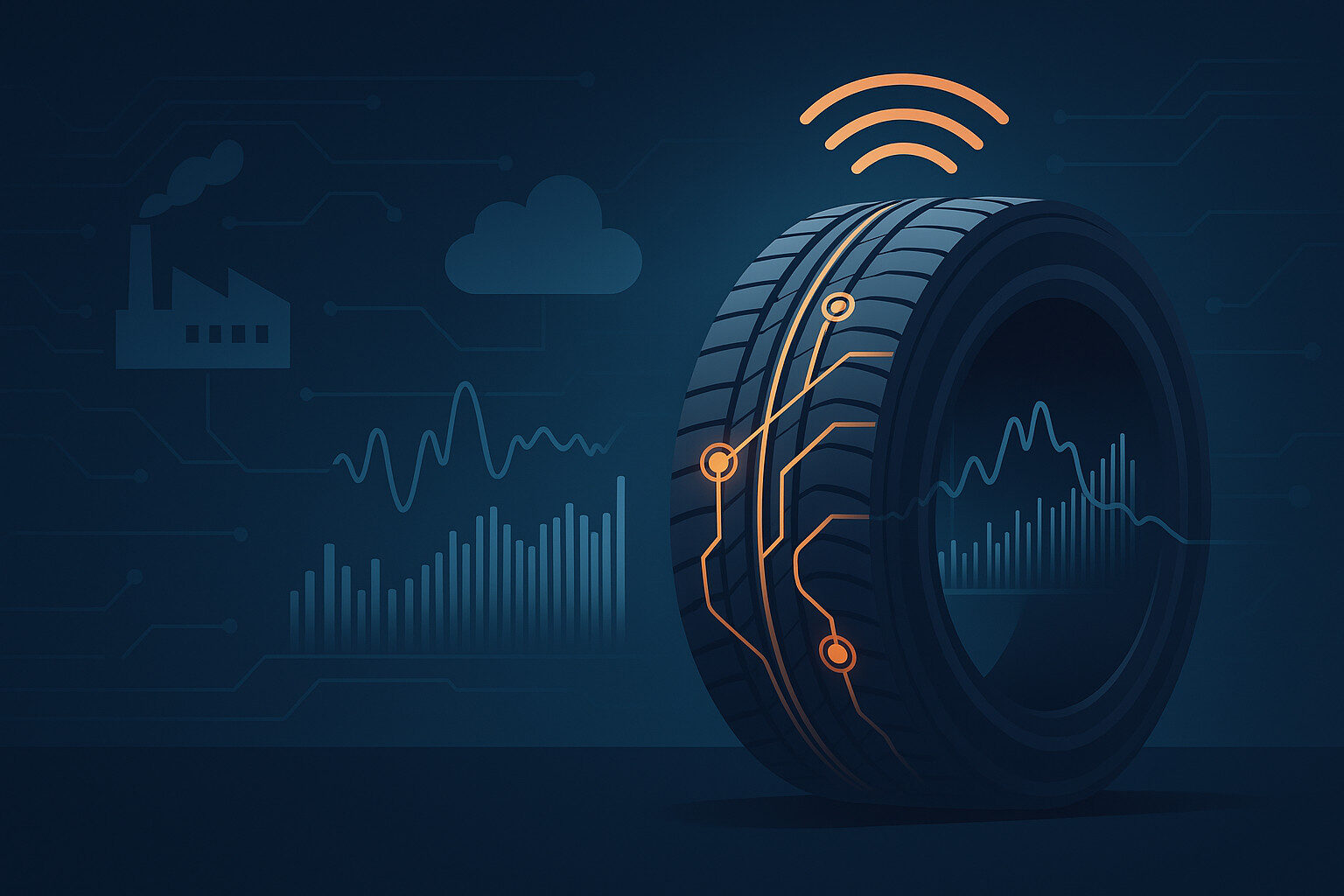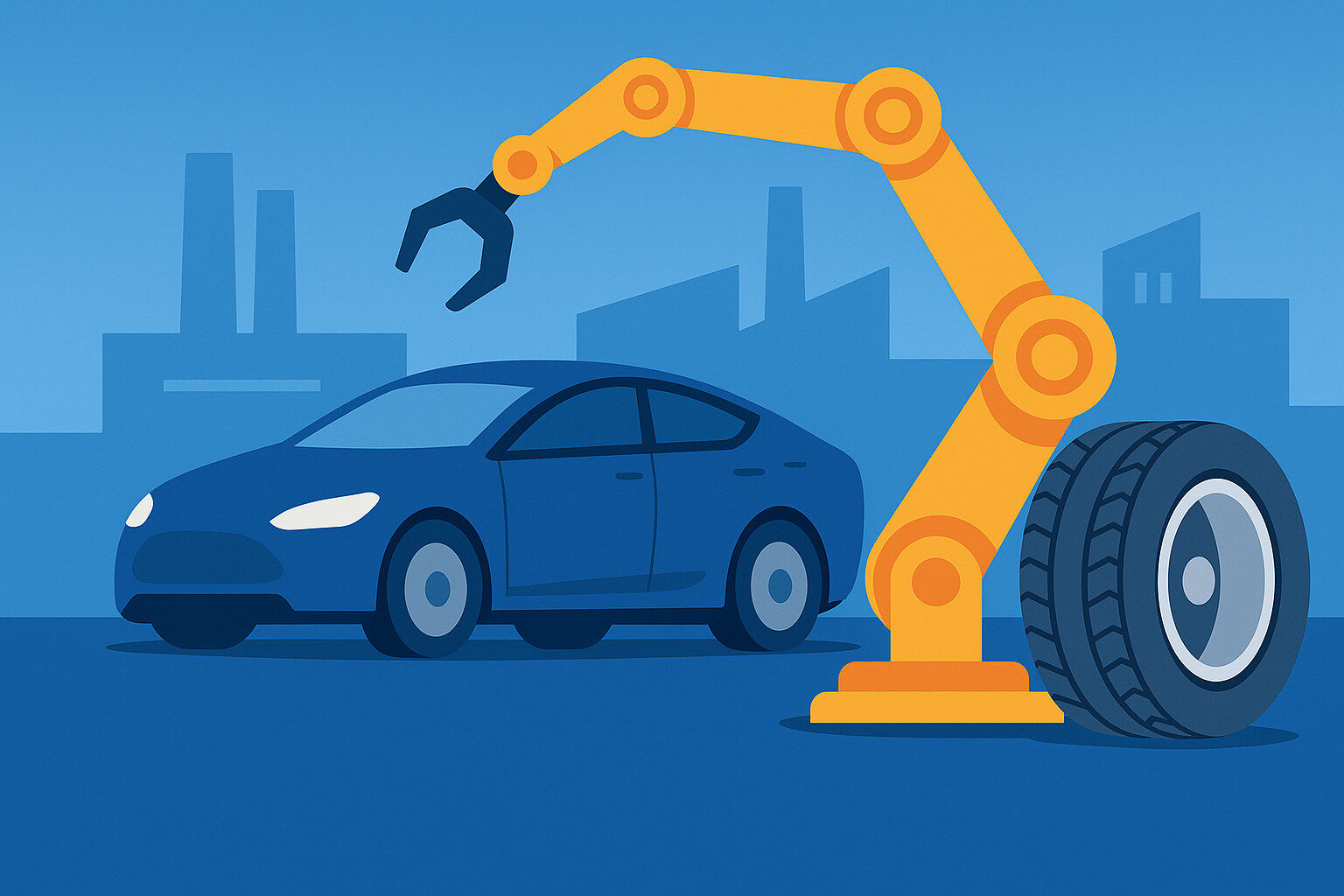Smart Tire Technology Impact on Hiring in 2025
The smart tire technology impact is no longer theoretical—it’s changing who you hire, how you run plants and service networks, and where value is created across the tire ecosystem. From sensorized casings and RFID-driven traceability to predictive analytics, ADAS/AV interfaces, and tire-as-a-service (TaaS) business models, 2025 brings a decisive shift: tires are becoming data-generating devices, and competitive advantage flows to companies that can design, produce, secure, interpret, and monetize that data. This guide breaks down the roles and skills you’ll need, how to assess candidates with real signal, and a practical roadmap to stand up capability within one to two quarters.

TL;DR (for busy executives)
- What’s new: embedded sensors, continuous pressure/temperature/load monitoring, RFID/GS1 traceability, digital twins, OTA updates, and subscription service models.
- Hiring shift: add data, firmware, and systems engineers to partner with classic tire R&D, quality, and operations.
- Risk zones: cybersecurity, functional safety, warranty claims from bad data, and privacy in fleet/customer analytics.
- Action: stand up a small “tire intelligence” team, run two high-ROI use cases (e.g., predictive fleet maintenance and plant quality traceability), and measure OEE/OTIF/warranty outcomes monthly.
What “smart tire” really means in 2025 (and why it matters)
Smart tire capability spans hardware, software, and process:
- Sensing & edge: pressure/temperature/acceleration/strain sensors; RFID/UID tags; in-tire microcontrollers; low-power design.
- Connectivity & data: BLE/NB-IoT/UWB/5G gateways; CAN/CAN-FD for vehicle bus; secure pairing; data models.
- Analytics & digital twins: physics-based + ML models that estimate wear, rolling resistance, contact patch, and remaining useful life (RUL).
- Integration: ADAS/AV stacks, fleet telematics, dealer POS/CRM, warranty and quality systems.
- Lifecycle: from compounding and curing to fitting, rotation, retreading, recycling—now with traceability and feedback loops.
Strategically, the prize is fewer breakdowns, better energy efficiency, reduced claims, differentiated warranties, and recurring revenue streams (monitoring, analytics, service bundles).
The new roles emerging (and what they do)
Below are the roles we see most U.S. tire manufacturers, distributors, and fleet service providers adding in 2025. Use the concise tables for scorecards and JDs.
Product & Engineering
Role | Core outcomes |
Smart Tire Product Manager | Define use cases, roadmap, and pricing for sensor-enabled SKUs and services; align R&D, firmware, analytics, and channel. |
Embedded Firmware Engineer (Tire/Edge) | Low-power firmware for in-tire MCUs; secure boot; BLE/NB-IoT comms; OTA update reliability. |
Vehicle–Tire Systems Engineer | Ensure sensors/algorithms integrate with vehicle ECUs, TPMS, ADAS; manage CAN/CAN-FD communication and diagnostics. |
Digital Twin/Modeling Engineer | Develop physics + ML models for wear, thermal behavior, RUL; validate against lab/field data. |
IoT/Edge Architect | Design data flows from sensor → gateway → cloud/warehouse; manage protocols, buffering, and security. |
Cybersecurity Engineer (Tire/TPMS/IoT) | Threat modeling; encryption; key management; penetration testing; ISO/SAE 21434 alignment. |
Data & Commercial
Role | Core outcomes |
Tire Data Scientist / ML Engineer | Build/maintain models that predict failures, optimize pressure/wear, segment driving patterns, and reduce claims. |
Analytics Product Owner (Fleet/Dealer) | Convert insights into user-facing dashboards and alerts that change behavior; prove ROI for TaaS. |
Customer Success Manager (Fleet Analytics) | Onboard fleets, ensure adoption of alerts, track ROI, and expand contracts. |
Revenue Operations (Services/Subs) | Price tiers, usage-based billing, renewal health, attribution for retention/upsell. |
Manufacturing & Quality
Role | Core outcomes |
RFID/Traceability Program Lead | Implement plant-to-field traceability (GS1/EPC/RFID); reduce “no-trace” warranty exposure. |
Smart Tire Quality Engineer | Link plant process data to field performance; own complaint → CAPA loop using sensor data. |
Sensor Manufacturing/Process Engineer | Integrate sensors during build/curing; maximize yield; manage vendor quality. |

Must-have hard skills by domain
Embedded & edge
- C/C++, low-power firmware, RTOS basics
- BLE/NFC/UWB/NB-IoT; power budgeting; antenna basics
- Secure boot, OTA, cryptography (ECC), key rotation
- Test frameworks (HIL), diagnostics, DFMEA for electronics
Data & modeling
- Time-series feature engineering; anomaly detection
- Digital twin calibration; hybrid physics-ML modeling
- Python/R; SQL; data versioning; MLOps
- Experiment design; A/B or controlled before/after
Systems & integration
- CAN/CAN-FD, UDS, OBD-II basics
- ISO 26262 (functional safety) awareness; ASPICE lifecycle
- Cloud + on-prem data pipelines; MQTT/OPC-UA where used
- API design; data privacy patterns (pseudonymization)
Commercial services
- Fleet telematics familiarity; driver/route patterns
- Service workflow integration (DMS/POS/CMMS)
- ROI/TCO calculators; renewal and adoption metrics
- Channel programs for dealer/retread networks
Soft skills that separate difference-makers
- Cross-function translation (R&D ↔ firmware ↔ data ↔ sales)
- Evidence-first storytelling (turn sensor data into decisions)
- Design under constraints (power, cost, temperature, vibration)
- Change leadership (move dealers and fleets through new workflows)
- Security & safety mindset (default-deny, test rigor, audit trails)
Candidate assessment: high-signal ways to evaluate fit
Replace generic interviews with work samples. Below are quick, practical tests per discipline:
Firmware/Embedded (90 minutes)
- Exercise: Given a pressure/temperature sensor and BLE module, sketch a low-power state machine that samples at 1 Hz when the wheel is rotating, 0.05 Hz when parked, and transmits on threshold breaches.
- What to look for: power budget, debouncing, edge cases, OTA fail-safes, secure pairing.
Digital Twin/Data (1–2 hours)
- Exercise: You receive 30 days of pressure/temperature/acceleration data. Build a simple RUL estimator and identify anomalous trips.
- What to look for: feature choices, handling missing/noisy data, validation logic, clarity of assumptions.
Systems/Integration (60 minutes)
- Exercise: Integrate tire data into a vehicle CAN network and a cloud endpoint. Identify attack surfaces and mitigations.
- What to look for: architecture clarity, CAN message map, security thinking (keys, replay, firmware signing).
Commercial/Fleet Success (45 minutes + role-play)
- Exercise: Build a 90-day adoption plan for a 500-vehicle fleet.
- Role-play: Handle a customer pushback on “false alerts” while defending value.
- What to look for: ROI framing, operator empathy, clear metrics (comeback rate, roadside events, fuel/energy savings).
Compensation architecture (so you can move quickly)
Comp will vary by metro, company size, and hardware vs. software weighting. Use structure rather than one-size numbers:
- Bands per family: Firmware/Edge; Data/ML; Systems; Product; Commercial.
- Skill differentials: security, automotive safety (ISO 26262), cloud + embedded bridge, and fleet domain expertise.
- Variable: tie to outcomes, not vanity metrics. Examples: alert precision/recall, OTA success rate, adoption/retention for fleets, warranty reduction.
- Equity/LTI: use RSUs or phantom equity for senior hires; vesting aligned with program milestones.
Publish base + incentive philosophy in the JD. Transparency saves weeks and improves acceptance.
Where to find this talent (fastest channels in 2025)
- Adjacent industries: automotive electronics, TPMS suppliers, telematics, wearables/low-power IoT, robotics.
- Universities & labs: polymer/materials (Akron), automotive systems (Michigan, Kettering), embedded/security (Purdue, Georgia Tech), data/controls (CMU, UT Austin).
- Communities: embedded/IoT meetups, DEF CON/AutoSec tracks, PyData/MLOps, digital twin forums.
- Fleets & mobility startups: candidates with adoption scars—exactly what you need.
Boomerangs: internal engineers in R&D/quality who want to move into data + firmware; upskill them with formal learning paths.

Build vs. buy: how to stand up capability without blowing the budget
- Buy commodity components (sensors, gateways) and analytics tools you can configure; build the glue that differentiates your use cases.
- Start with two use cases that pay back quickly:
- Predictive fleet maintenance: fewer roadside events; better uptime; lower warranty.
- Plant-to-field traceability: faster complaint resolution; lower “no-trace” exposure.
- Keep the stack small: one telemetry pathway, one warehouse, one BI tool, one MLOps pattern.
Governance: keep “smart” safe and reliable
- Security: adopt ISO/SAE 21434 practices; secure boot and signed firmware; key rotation; least-privilege access.
- Safety: respect ISO 26262 boundaries; separate non-safety analytics from safety-critical pathways.
- Privacy: anonymize fleet data; clear customer contracts; opt-in telemetry.
- Change control: version firmware/models; maintain rollback plans; audit OTA.
Operating KPIs (that actually prove value)
Use short, scannable metrics—review weekly in ops and monthly at the exec table.
Product & Reliability
KPI | Target |
OTA success rate | ≥ 99% |
Sensor field failure rate | ↓ QoQ |
Battery life forecast error | ≤ target |
Alert precision/recall | ≥ agreed threshold |
Fleet & Service
KPI | Target |
Roadside incidents per 100k miles | ↓ trend |
First-time fix rate (smart alerts) | ≥ 90% |
Adoption (active vehicles) | ≥ 80% |
Renewal rate (TaaS) | ≥ target |
Plant & Warranty
KPI | Target |
Traceable units (%) | ≥ 98% |
Complaint cycle time | ↓ trend |
Warranty cost per unit | ↓ trend |
FPY on sensorized SKUs | ≥ site target |
Team design: a small “tire intelligence” pod that scales
Start with 6–10 people:
- 1 Smart Tire PM (lead)
- 2 Firmware/Edge engineers
- 1 IoT/Systems engineer
- 2 Data/ML roles (one heavy on modeling, one on engineering)
- 1 Cybersecurity specialist (shared with enterprise if needed)
- 1 Quality/Traceability lead
- 1 Customer Success (Fleet) for early lighthouse accounts
Operate as a product squad with a quarterly roadmap and weekly Gemba, not a side project.
30–60–90-day roadmap to launch
Days 1–30: Align & instrument
- Confirm use cases and value hypotheses; write one-page PRDs.
- Select the minimal stack (telemetry → warehouse → BI).
- Pick two lighthouse customers/plants; baseline their KPIs.
Days 31–60: Build & pilot
- Ship v1 of firmware and data pipelines; small digital-twin model; secure OTA.
- Launch dashboards/alerts to limited users; train operators/techs/fleet managers.
- Start weekly value tracking (roadside events, warranty, FPY).
Days 61–90: Prove & scale
- Publish before/after results; run an A/B route or matched asset comparison if possible.
- Harden security; finalize support playbooks.
- Plan scale to the next plant/fleet segment; line up procurement and training.
Writing your JDs (steal this structure)
Title: [Role] — Smart Tire / IoT
Why it matters (3 bullets): tie to safety, uptime, warranty, and new revenue.
Outcomes (12 months): list 3–4 measurable targets.
What you’ll do: 6–8 specific responsibilities.
Must-have skills: keep to 6–8; prioritize safety/security competence.
Nice to have: list 3–4 relevant tools/standards.
Comp range & differentials: publish base + bonus logic; note differentials for security, ISO 26262, or fleet domain expertise.
Hiring process: phone screen → work sample → panel → decision same day.
Common mistakes that slow teams down
- Hiring a “tool administrator.” You need builders who drive outcomes, not dashboards without owners.
- Too many vendors. A Frankenstein stack kills reliability and security.
- Skipping security/safety. One breach or field failure can nuke trust.
- Boiling the ocean. Pick two use cases; nail them; then expand.
- Hiding comp. Publish ranges and differentials; close faster.
FAQ (copy/paste for your careers page)
Q: Do we need automotive ISO 26262 experts for every role?
A: No. Prioritize safety awareness for systems touching the vehicle. Concentrate deep 26262 expertise where it’s truly needed (e.g., integration gateways that influence vehicle behavior).
Q: What’s the best first use case?
A: Where cost-of-failure is highest and data is clean enough: fleet roadside prevention or plant-to-field traceability are consistent winners.
Q: Build our own sensors or partner?
A: Partner for commodity components; build firmware/data integration and analytics that express your unique operating knowledge.
Q: How do we avoid “pilot purgatory”?
A: Use value gates: baseline → pilot → measured improvement → executive go/no-go to scale. Sunset experiments that miss targets.
Final word
Smart tires turn rubber into an intelligent system—one that touches vehicle safety, fleet uptime, sustainability, and recurring revenue. To capitalize, you don’t need a 50-person org or a moonshot budget; you need a small, cross-functional team with the right firmware, systems, data, quality, and commercial muscles, a minimal stack, and an obsession with measurable outcomes. Start with two high-ROI use cases, publish results openly, and scale what works. That’s how you turn the smart tire technology impact into durable competitive advantage in 2025.




